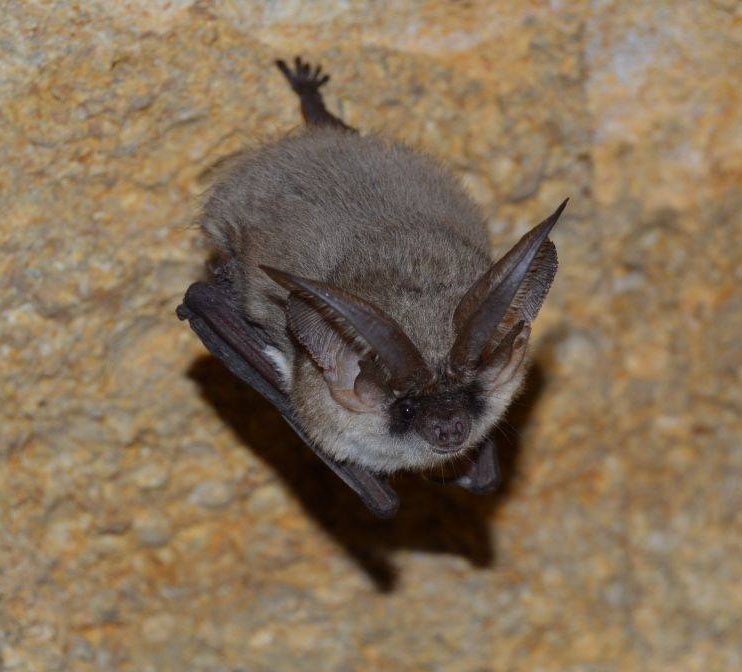Rare bat discovered by our survey volunteers

A very rare grey long-eared bat was discovered in a church in Devon to the excitement of volunteers that took part in our Bats in Churches Study last summer.
A DNA analysis of droppings collected by one of our volunteers confirmed the presence of grey long-eared bats in the church they surveyed.
These bats are one of the rarest mammals in Britain with an approximate population of just 1000 and there are few known records of them using churches.
Our volunteer-led Bats in Churches Study is running every summer until 2022 and encourages the public to sign up to survey their local church for evidence of bats.
The study will help us to understand how bats are using churches in England and attitudes towards them. You can find out more about what the surveys entail and register to take part here- no prior experience necessary.
This year, due to coronavirus restrictions, the launch of the survey was delayed. However, with the re-opening of churches the survey is now open and running until August for anyone who wants to take part, dependent on permission from the church selected.
We have also amended the instructions to conform to social distancing guidance, which will be issued on registration.
Participants are encouraged to share their experiences on social media using #ChurchBatDetective. We're very much looking forward to this year's discoveries!
Adrian Bayley, Volunteer Surveyor for the Bats in Churches Study who discovered the rare bat said:
"I enjoyed taking part in the Bats in Churches Study. I was pleased that some of the droppings collected proved to be those of a Grey long-eared bat! I am looking forward to surveying more churches this summer.”
Craig Dunton, Grey long-eared bat Project Officer for the Bat Conservation Trust said:
“It is always exciting to hear of new grey long-eared bat roosts. As we know so little about this enigmatic species, knowledge of any new roost is exciting and gives us the opportunity in the future to learn more about them. The rarity of grey long-eared bats is, in part, due to the significant decline of their favoured foraging habitats – both in quantity and quality. Unimproved grasslands in the UK have declined by over 92% in the last century, largely due to changes in farming practices and agricultural intensification.”
Marian Spain, Chief Executive for Natural England, said:
“The grey long-eared bat is one of our rarest and most distinctive mammals: this is a wonderful discovery by some very dedicated volunteers and good news for everybody who cares about nature.
But we also know that bats can be a source of great concern for some those who have to balance looking after beautiful buildings and providing places for worship alongside wonderful wildlife like bats. The hugely important Bats in Churches project is working to find ways for church communities to live alongside and appreciate their resident bats, while alleviating some of the pressures that bats can cause.”
